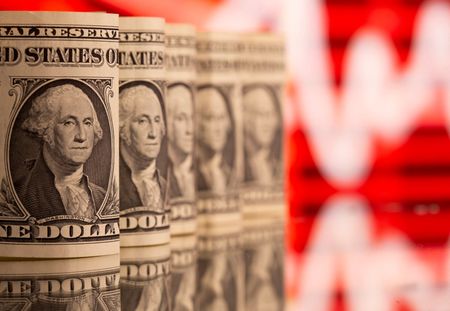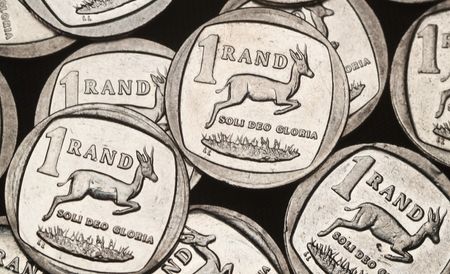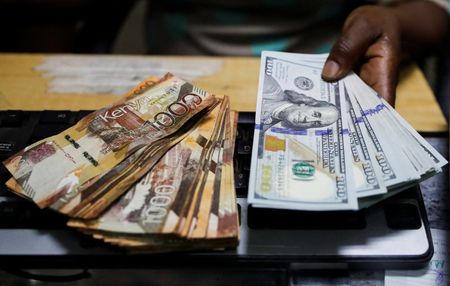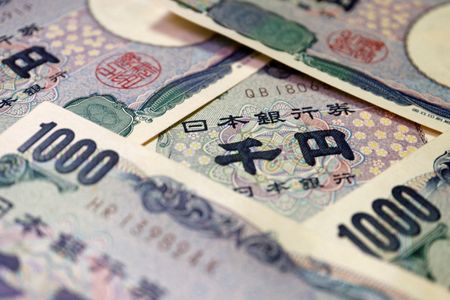By Hannah Lang
NEW YORK (Reuters) -The dollar rose in choppy trading on Friday after data showed that U.S. job growth slowed in January but that the unemployment rate edged down to 4.0%, giving the U.S. Federal Reserve cover to hold off cutting interest rates until at least June.
Nonfarm payrolls increased by 143,000 jobs last month after rising by an upwardly revised 307,000 in December, the Labor Department’s Bureau of Labor Statistics said in its closely watched employment report.
Economists had expected the survey to show 170,000 jobs added.
The dollar index, which measures the U.S. currency against the yen, sterling and other peers, rose to as high as 108.02. It was last up 0.102% at 107.77.
“We don’t really have a trend in nonfarm payrolls,” said Joseph Trevisani, senior analyst at FX Street. “We don’t have a declining trend, and we don’t really have a strengthening trend. It’s pretty much par for the course, so I don’t think you’re going to get a lot of market movement out of this.”
Traders are now pricing in just one Fed rate cut this year, according to CME’s FedWatch tool.
The U.S. currency has fallen around 2% from Monday’s high of 109.88 as investor nerves over global trade war risks have eased.
The euro fell after the data readout, and was last down 0.09% at 1.0374.
Britain’s pound was flat at $1.2439 after falling 0.54% on Thursday when the BoE lowered rates to 4.5% and said the UK economy would grow just 0.75% this year, half the previous forecast.
The pound fell as much as 1.1% just after the decision but regained some ground when BoE Governor Andrew Bailey told Bloomberg that markets should not read too much into a switch by some policymakers to vote for deeper rate cuts.
YEN STRENGTH
The dollar rose 0.15% against the yen to 151.9 after falling below 151 yen for the first time since Dec. 10 in early Asian trade on bets that the BOJ will raise rates more than previously expected this year, supported by wage data earlier this week.
Adding to the higher rate expectations were comments by Bank of Japan board member Naoki Tamura, one of the board’s most hawkish members, who said on Thursday the central bank must raise rates to at least 1% in the latter half of fiscal 2025.
“(Tamura) was a little bit more hawkish than before … I think there is less chance that the BOJ will delay a rate hike until September,” said Mizuho’s Yamamoto.
Barclays strategists Shinichiro Kadota and Lhamsuren Sharavdemberel anticipate further falls in the dollar-yen currency pair in the near term, with a focus on the results of Japan’s wage negotiations.
The early days of the Trump administration have kept investors on edge. Trump this week suspended planned tariff measures against Mexico and Canada at the last minute, but imposed additional 10% levies on imports from China, which quickly announced measures of its own on U.S. imports.
Meanwhile, U.S. Treasury Secretary Scott Bessent’s pledge to contain yields on 10-year Treasury notes signalled that the Fed may be out of the administration’s direct line of sight.
Bessent said in an interview with Fox Business on Wednesday that, while Trump wants lower interest rates, he will not ask the Fed to cut rates, and that he and the president were intently focused on the 10-year Treasury yield.
He added that lower energy prices will help contain price pressures, while spending cuts will improve the fiscal outlook.
(Reporting by Hannah Lang in New York; additional reporting by Harry Robertson in London and Brigid Riley in Tokyo; editing by Shri Navaratnam, Kim Coghill, Aidan Lewis, Mark Heinrich and Jane Merriman)








